Your ideal Sofia city break!
Sofia is the perfect city break you didn’t know existed!
Sofia is youthful and eclectic and it is perfect to explore in 2 days! This is why Sofia city break is ideal for a quick getaway in Europe.
While researching for the trip, I read mixed reviews saying that maybe Sofia (София) wasn’t worth it. So, is Sofia worth visiting? We quickly found out that yes, they were wrong! Sofia is definitely worth visiting for a day or two. It can also be a good hub for other destinations in the country, we will also cover those in this article.
The capital city may not have countless activities but you can easily enjoy its rich history. Discover with me its parks, churches and its delicious food! Plus, I will give you tips on how to get around. And of course, I will tell you where to eat and drink. Here is your Sofia travel guide.
A little about Sofia
The city was created nearly 2,000 years ago. Its first name was 'Serdica'. Through the years, the city has adapted to its multiple periods, kingdoms and empires. Today, it's a city with a rich history that combines Roman ruins, Byzantine, Ottoman, and neoclassical buildings alongside communist brutalist buildings. If you are a history buff or love architecture, this eclectic European city will surprise you. This destination will surely have something for everyone, adults and kids alike.
2 days in Sofia - the perfect itinerary
Heads up, the city can easily be visited in one day if you are the kind of traveller like us, who walks 20km per day. If you feel like this itinerary falls short for the second day, I would recommend that you rent a car and go to the Vitosha mountains or do one of the proposed day trips below. The Vitosha Mountain can be seen from the city center and look beautiful. Unfortunately, we did not get the chance to go since it was a little difficult to access public transit by the time we wanted to go.
If you want to take it slower, this Sofia 2-day itinerary is perfect for you! You can always mix and match my recommendations. This article will answer all of your questions about what to do in Sofia.
Day 1
Start your day with breakfast, there are 12 traditional Bulgarian dishes for breakfast, I will suggest trying one of these. Fordor proposes this to the whole list.
Alexander Nevsky Cathedral
Your next stop should be the city’s main landmark, Saint Alexander Nevsky Cathedral.
The Orthodox Cathedral is the symbol of the city and one of the most photographed spots in Bulgaria. The building is imposing, the domes are very beautiful and they give a nice colour touch to the city. The Cathedral is built in the Neo-Byzantine style and it is believed to be one of the top 50 largest Christian church buildings in the world and to be among the 10 largest Eastern Orthodox church buildings.
The religious building was built between 1882 and 1912, and it is set to commemorate the 200,000 Russian soldiers who died fighting for Bulgaria’s independence during the Russo-Turkish War.
Sadly, the inside is not well maintained and some of the frescoes are nearly erased. I hope that in the future they will plan to preserve them better and restore them.
The entrance to the cathedral is free.
This church is located Right across from Alexander Nevsky Cathedral, you will find the church that gave the city its current name, Saint Sofia Church. The building dates back to the sixth century. Excavations have revealed the remains of several earlier churches and a Roman-era necropolis. The church is now an underground museum.
You can also find the Monument to the Unknown Soldier here.
Follow the yellow bricks
Serdika, the city centre, is mostly designed around the cathedral, the other main buildings are easily recognizable with the yellow cobblestones paving your way. In this perimeter, you will find that baroque, Byzantine, ancient Roman ruins and communist styles perfectly blend together reflecting the country's rich historical influences.
So what are these yellow bricks? Well, I’m glad you asked. The story goes that Prince Ferdinand I of Bulgaria wanted to put Sofia on the map by making improvements in the city, after all, the town at the time, did not have a single paved road. When Ferdinand I married, the Austro-Hungarian Empire had given them to him as a wedding gift. The gift covers the road between the royal residence and the newly built National Assembly building. However, some stories said that Bulgaria took a loan to build these and they were not a gift. The yellow road goes through Tsar Osvoboditel Boulevard, one of the main roads of the city.
Stroll around Vitosha Boulevard
Full of shops, terraces, restaurants, bars and coffee shops, this pedestrian street is in the heart of the capital. This is where all the action happens and where the city really comes alive. Stroll around the street and enjoy the vibe and the Vitosha mountain as a backdrop. While you are walking, don’t forget to check out the architecture of the Art Nouveau buildings.
Visit the National Palace of Culture
Usually referred to as the NDK, this palace is the largest cultural complex in Bulgaria. Yearly, it hosts around 300 events, everything from international conventions, and political forums, to film festivals, concerts, and more. I would suggest visiting the website to see what events are happening while you visit.
Sofia Regional History Museum
Located inside the former Central Mineral Baths building, the museum highlights the complex history of the city. Here, the expositions take you from prehistory to the modern day. The museum has two floors and includes rooms dedicated to the Bulgarian royal families of the 19th and 20th centuries.
Before entering, take time to admire the Mineral Baths building from the outside as well, it is one of the prettiest in the city. In front of the building, you’ll find a fountain that’s still fed by hot natural mineral water. The water can be drunk, however, I will recommend you not to it since it tastes funny.
If you like history, I would suggest also visiting the Sofia National Museum of History which is Bulgaria's largest museum which tells the story of the 1300 years of the country through 650,000 artifacts.
Former Communist Party Headquarters
Located in the city center, the building is one of the main landmarks of the city. Building under the neo-classical style, the building dominates the center. Today, it is used as a Government office and the Sofia Hall is occasionally used for charity concerts. You will only be able to admire it from the outside.
Ivan Vazov National Theatre
The Ivan Vazov National Theatre is a national icon, designed at the beginning of the 20th century, the theatre has been a beacon for Russian productions of Shakespeare plays. It was built in the Neoclassical style with gold-coloured ornaments, lions and statues of Apollo.
Royal Palace
This is the former royal palace and it is now the National Art Gallery and the Ethnographic Museum. You cannot visit the other parts of the palace. The exterior has recently been restored to its former glory. The National Gallery has an impressive collection of 30,000 paintings, sculptures and prints from the period 1878-1990.
Free walking tours are also a great way to learn about the city. Sofia Free Tour is a popular company (I didn’t take it so I cannot recommend it).
Day 2
Your second day visiting Sofia will have museums, street art and churches.
The Museum of Socialist Art
A little to the south of the city, not far from the football stadium, you will find an open-air museum dedicated to the communist era in Bulgaria (1944-1989). Divided into three sections, the museum collects the history of the communist party that ruled the country for more than 40 years. The first section contains propaganda videos where you can see military parades, speeches by national officials and Russian leaders as well as news clips from the post-war era. The second part has paintings by renowned artists that depicted life in those years. Finally, the third section is outside, a garden that has sculptures of all sizes showcasing the glory of the party. For example, it has a giant statue of Lenin red star with the socialist party star which once stood in the center of the city. If you are a history buff, then this is the place for you.
If you are still curious about this era, then you can visit the Red Flat. It is a family home that has been unchanged from the 1980s. You will see what was the ordinary life behind the Iron Curtain.
Churches, Mosque & Synagogue
Often called the Jerusalem of the East, Sofia gathers the three monotheist temples very close to each other, this is called the square of religious tolerance. The Bulgarian capital has numerous churches some are new, others date back to the 4th century. St. George Rotunda dates to the Roman Empire and sits atop some of the oldest ruins in the entire city. The Banya Bashi Mosque was built in 1576 during the rule of the Ottoman Empire.
Did you know that the Sofia Synagogue is the biggest in Eastern Europe? The Sofia Synagogue has survived multiple bombings and it was built under the Moorish Revival style. Bulgaria had a striving Jewish population and 80% of the community used to live in Sofia. During the Nazi regime, Boris III, thankfully asked for delays to avoid deporting the Jewish population which help them save most of the families.
Finally, the Sveta Nedelya Orthodox Church an Eastern Orthodox church that was originally consecrated in the 10th century is an excellent example of medieval architecture.
Rotunda church of St George
This is one of the most important churches in the city since has been transformed by every major historical event. It was built as a Roman bath in the 4th century BCE. At the time, Sofia was the capital of Dacia Mediterranea during the Roman Empire and Bulgarian Empire. These ruins are visible from the outside. The frescoes from the 12th, 13th and 14th centuries will astonish you (they were discovered in the 20th century). Then, during the Ottoman Empire (17th century), the church was turned into a mosque.
Boyana Church
This church is a UNESCO World Heritage Site. The medieval Bulgarian Orthodox Church is widely known for its frescoes. The first one was painted in 1259, making it one of the oldest preserved monuments of East European medieval art. Through the centuries, more frescoes have been added, keeping the same style.
The entrance of the church controls the time and the number of people visiting.
If you are still into churches, you can visit Sveta Nedelya Church which has many frescoes from the 10th century.
Parks & Public Markets
The capital has numerous parks and green areas. This is a perfect occasion to rest and cool off the summer heat. Borisova Park is the biggest, oldest and the most-known park in Sofia. The park is located near the football stadium and is dominated by a communist sculpture.
The metropolis is also known for its numerous public markets. The Central Market Hall, Zhenski Market or Ladies’ Market provide different things to see, smell, taste and buy. You can easily spend a few hours exploring them. Don’t forget to eat there, you will not have fresher food than this! Check out the Bitaka flea market for some unusual findings.
The Women’s Market in Sofia was once a market where all the stalls were run by women, not this is not the case anymore. The market still remains in the heart with all its traditional homemade jams, pickles and other local products. The hall was built in 1909 and features the Art Nouveau style which is most visible in the exterior façade. The covered Central Market Hall is located in front of the Central Mineral Baths Building. It was opened in 1911 and has a Neo-Renaissance look, featuring elements of Neo-Byzantine architecture and Neo-Baroque.
Stumble into street art
While the city is not a notorious hub for street art, it is starting to pick up more and more. The majority of things that will see in the city are tags and nazi swastikas (horrible, I know) there are some hidden gems. Artists are fighting the city to have more spaces to have their art so maybe in a few years, we will see more and more. Neighbourhoods like Hadzhi Dimitar seem to have quite a few on the sides of apartment buildings.
Mount Vitosha
Mount Vitosha is the perfect half-day trip south of the city. This is for nature lovers. The mountain is 2290 metres high and offers countless trails. It also has many lifts to make your ascension easier. There are many starting points, the most popular are Knyazhevo, Boyana, Dragalevtsi and Simeonovo. There is also the beautiful Boyana Waterfall which is 25 meters tall. You can arrive in the mountains by taking the metro from Serdika metro Station to Vitosha Station and then bus 64.
If you like to ski, then this is the must-stop if you are coming in winter.
Sofia Bulgaria Photo by Natalya Letunova on Unsplash
Where to eat in Sofia?
Bulgarian food is a delightful fusion of Turkish kebabs and Eastern European potato-based dishes, with lots of fresh salads. One of the best places to try authentic Bulgarian cuisine is Mehana Karajata where you can see folk troupes. You can also do a food tour. However, we opted for other restaurants during our visit, see our recommendations below.
Moma Restaurant
Moma is an extremely beautiful restaurant mixing traditional recipes with a touch of originality from the chef. The homemade bread is given with Bulgarian spices on the side so you can season it to your liking. The restaurant has an extensive list of Bulgarian wines which will pair perfectly with your meal. The staff was really friendly and they spoke perfect English.
The decor shines the light on different crafts as pot making, woven textiles, bread making and rose to pick reflected in part in big portraits of momas (young unmarried women) with their folk outfits. The restaurant embraces these crafts that have shaped the country for generations. Everything from the chair’s textiles to the lighting, to the plate, displays the beauty of these traditions.
I will highly recommend this restaurant.
Pod Lipite
The name translates as Under the Linden Trees, which is a tavern-like restaurant inside a traditional house with a wooden structure and white walls. The restaurant has its farm, it does not get more farm-to-table than this! Opened for almost a century, they kept the initial decoration of folk dresses and vintage items such as hay carts and agricultural tools. The restaurant has 100 seats and has a beautiful terrace under the trees. This is the perfect place to try traditional Bulgarian Food!
Kanaal
This craft beer bar has a cool selection of beer both from their in-house beer and small breweries from around Europe. Enjoy a few beers on their terrace listening to the groovy sounds from their DJ.
Raketa Rakia Bar
The bar is well-known for its communist-era retro vintage memorabilia and its wide selection of the national drink, Rakia. Be careful not to drink too many ;) The food menu has hearty Bulgarian food that will fill your belly and will make it easier to drink more rakia.
Rakia is a distilled alcoholic beverage made from fermented grapes, plums, or other fruits with high sugar. The taste is somewhat similar to flavoured vodka. Rakia is a popular drink in the Balkan area and it has different names along with different countries. However, it is believed that the drink was originally to be from Bulgaria as early as the 14th and 16th centuries.
Ale house
This is your regular beer bar except that you can pour your own beer tap! How cool is that? Plus, the house beer is super cheap, around $1 for 2 pints!
There is also a Free Food Tour, Balkan Bites. Sadly, we didn’t know it existed when we visited but it has great reviews.
Day trips from Sofia
If you are looking to extend your visit, I have a few ideas for you.
Plovdiv is one of my favourite cities in Bulgaria, it is hip and artsy and it is just 90 minutes by car. You can have a full guide by clicking here.
Here are 5 nature escapes: Vratsata Gorge and its cute town (90 minutes to two hours). Hot springs in Sapareva Banya because who doesn’t like a hot spring to unwind? This is located 1 hour away. Rilska Skakavitsa waterfall is the highest waterfall in the towering Rila Mountains. Hike the Seven Rila Lakes. They are located 2 hours from Sofia and it is one of the most beautiful hikes I have ever done! They are a series of Glacial lakes. Pirin National Park is a UNESCO World Heritage Site and it is a 2h30 drive from the capital. So which city break will you take?
Rila Monastery is a must-do in Bulgaria, it is around a 2h drive. The Monastery frescoes will blow you away. This is one of Bulgaria’s UNESCO world heritage sites.
Practical information and travel tips
Best time to visit Sofia
Sofia has four distinct seasons and they are very clearly defined. Apparently, fall is beautiful with the foliage around Mount Vitosha. If you like winter sports, then this is the time for you to visit. The skiing in Mount Vitosha or nearby Bansko is at the top of its game. The city with the snow must be pretty. Throughout the year, the city has a humid continental climate with an average temperature of 10.6°C
We went in summer (July to be exact) which is also the busiest and hottest season but I do like warm temperatures. I found that it was the perfect time to visit the city since a lot of the sightseeing is outside. The temperatures can reach more than 35°C in the months of June to August. The months with the most rain are the months of July and October.
What to bring home?
If you are looking for souvenirs, I will recommend staying away from the usual magnets or shot glasses and buying something more authentic. Bulgaria is the world’s leading producer of rose oil so you could buy organic rose-oil cosmetics. You can also bring back Bulgarian wines or something from the farm markets.
Getting around
The city is easily walkable and all the main attractions are within reach. The city has a great metro system that is very modern and serves the city very well. The capital also has very convenient trams. The price of a ticket for the metro is around 1.60 Lev so around 1 Euro. for more information about the public transportation system go to the official site.
Did you know that ancient Roman ruins were discovered when digging for the metro?
Getting in and out of the city
Sofia Airport (SOF) is the main international airport of Bulgaria and has many flights to multiple European cities. Charter companies also go there allowing them to have cheap flights to the country. If you are coming from North America like me, you can combine Bulgaria with other countries. We mixed Greece & Bulgaria on the same trip.
The subway also goes to the airport so don’t worry to get in and out of the city, it is very convenient.
CURRENCY
Bulgaria is part of the EU but it does not have the Euro, the currency is the Bulgarian Lev (BGN). In old Bulgarian the word "lev" meant "lion" and the plural of lev is leva.
Pro tip 1: It was really hard to take out money without a European master card, we learned this the hard way! We only brought 70 Leva for the whole trip thinking that we would be able to take out more cash. Since not all the restaurants, parking, and stores accept credit cards, we were in big trouble! Thankfully my in-laws came to the rescue and wired us some money. Talk about adulting... -_-
Pro tip 2: Also, the currency could be hard to find abroad (we couldn’t find more than 70 leva in Montreal) so I would suggest bringing euros and changing them in Bulgaria. It will be easier to change than Canadian dollars, for example.
TAP WATER
You can drink your tap water. So ditch your plastic bottle and fill your reusable bottle wherever you want! Remember that in Europe you have to pay for your water at restaurants, so you better not forget your water bottle!
POWER
Bulgaria uses the European standard of 220V to 230V, with a frequency of 50Hz. The plugs are characterized by two or three round pins in a row. They use plugs Type F, C.
SAFETY
The country is extremely safe! A lot of people asked me about safety but we did not feel that this was an issue. However, everyone has their own experiences and stays alert at all times, even in your home city.
PSST: Are you looking for more Bulgaria travel guides? Don't forget to read my other posts How to plan the perfect road trip in Bulgaria for a complete guide on the country & A Complete Guide of the Plovdiv Region for a guide in the hip Bulgarian city.
Do you like the content? Why not help me by buying me a virtual cup of tea?
PIN IT FOR LATER!
Exploring Sofia in 2 days, a complete guide of what to do, eat and drink. City break sofia bulgaria #sofiaBulgaria #sofia #bulgria #travel

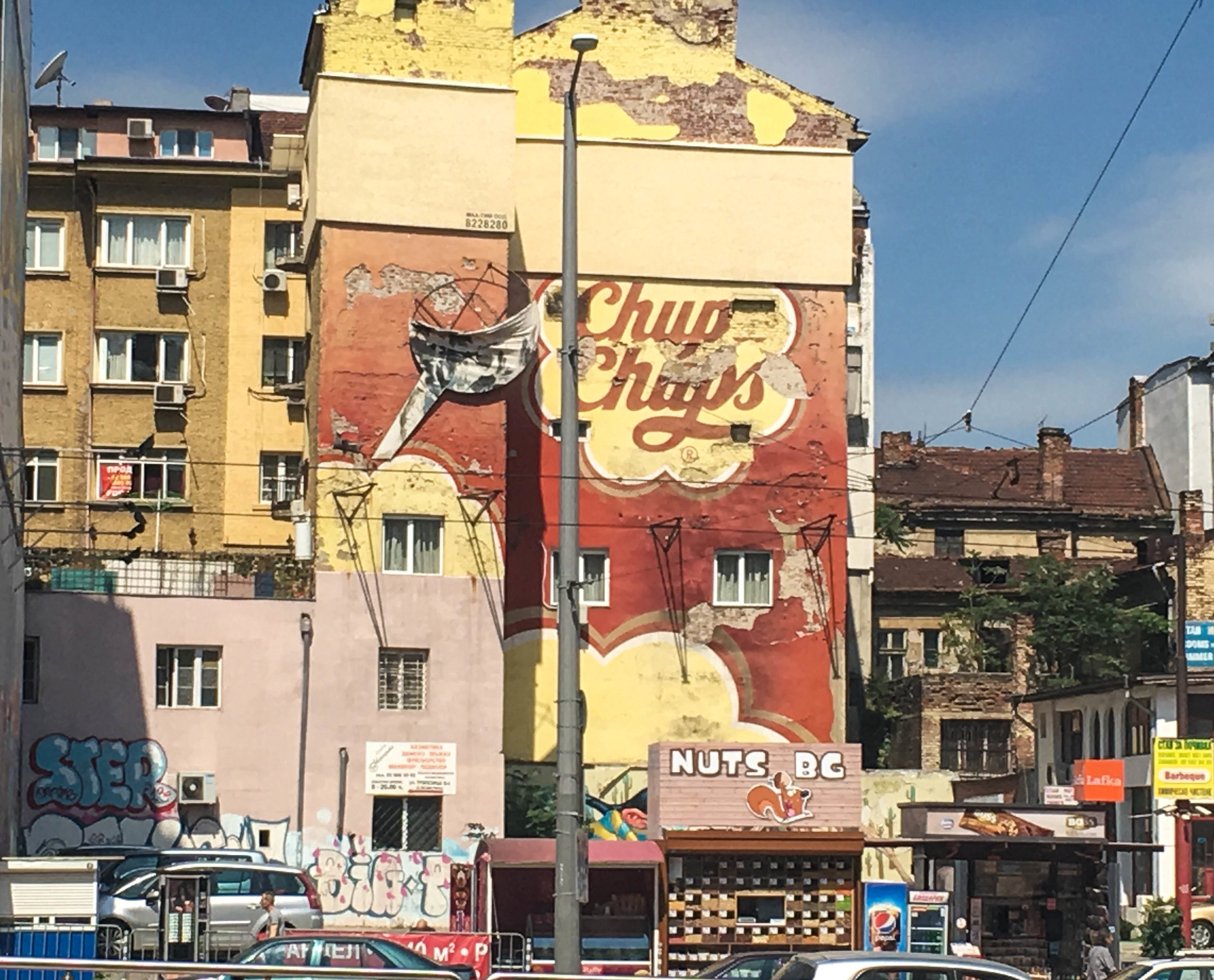


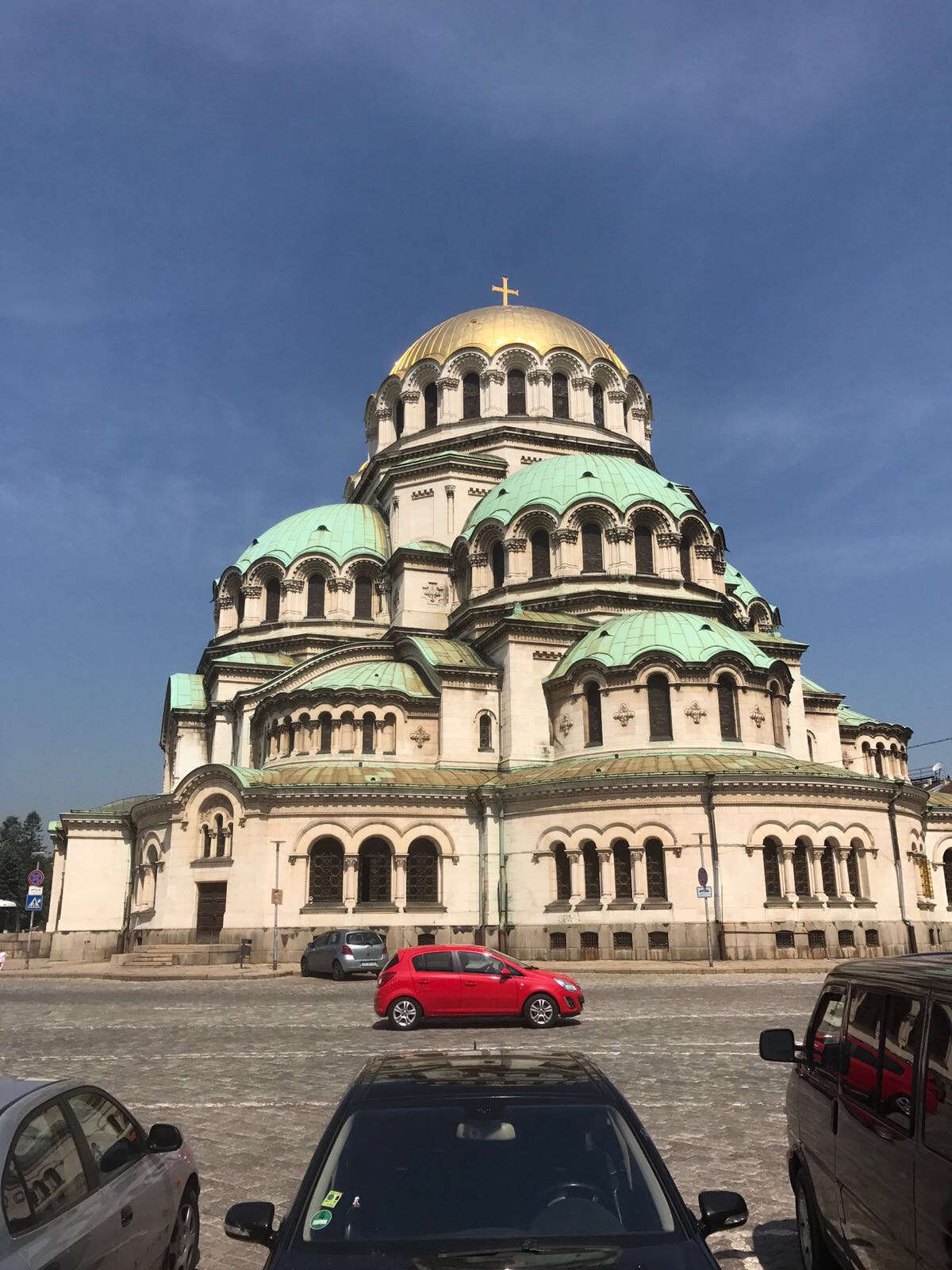
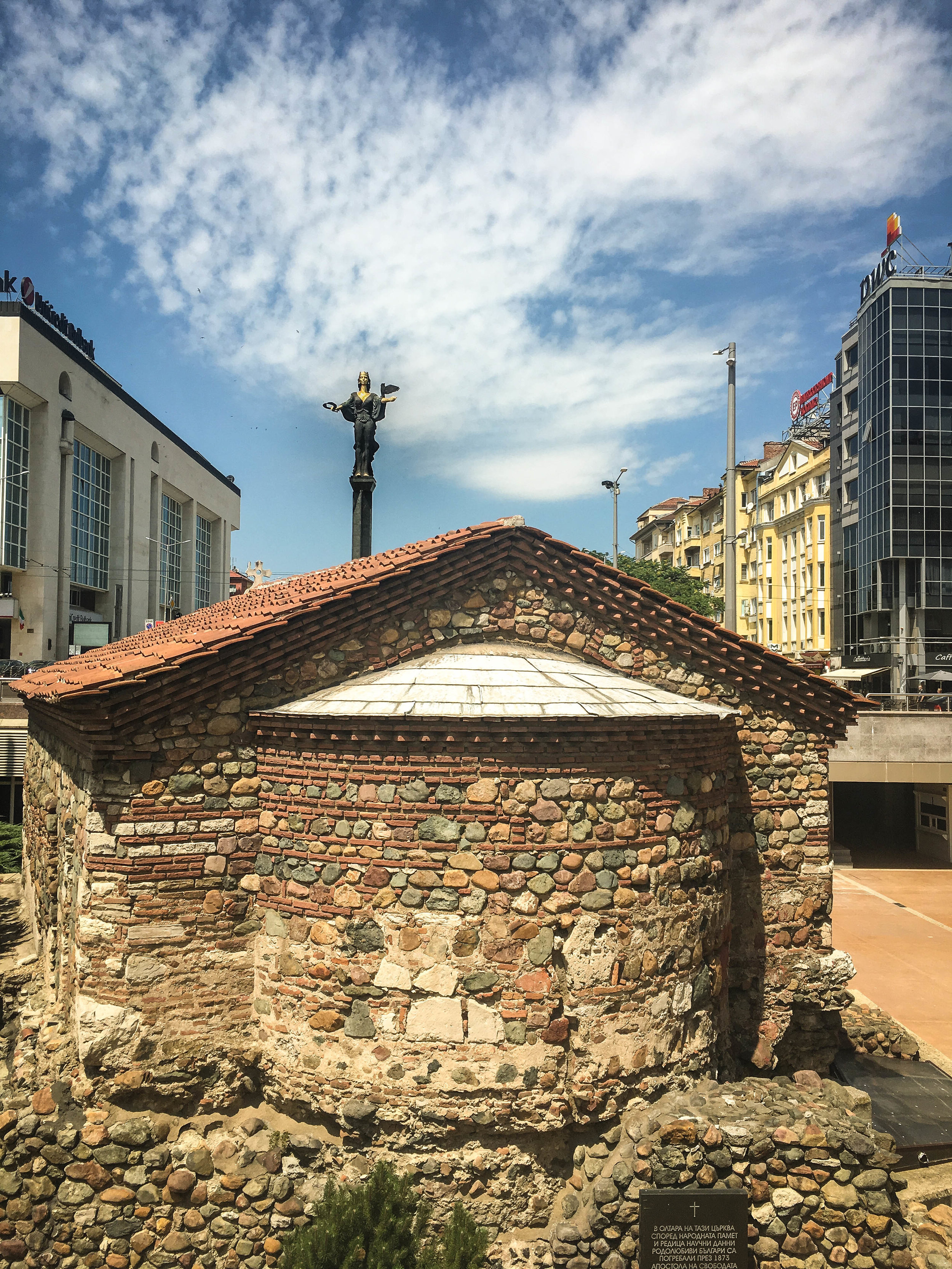
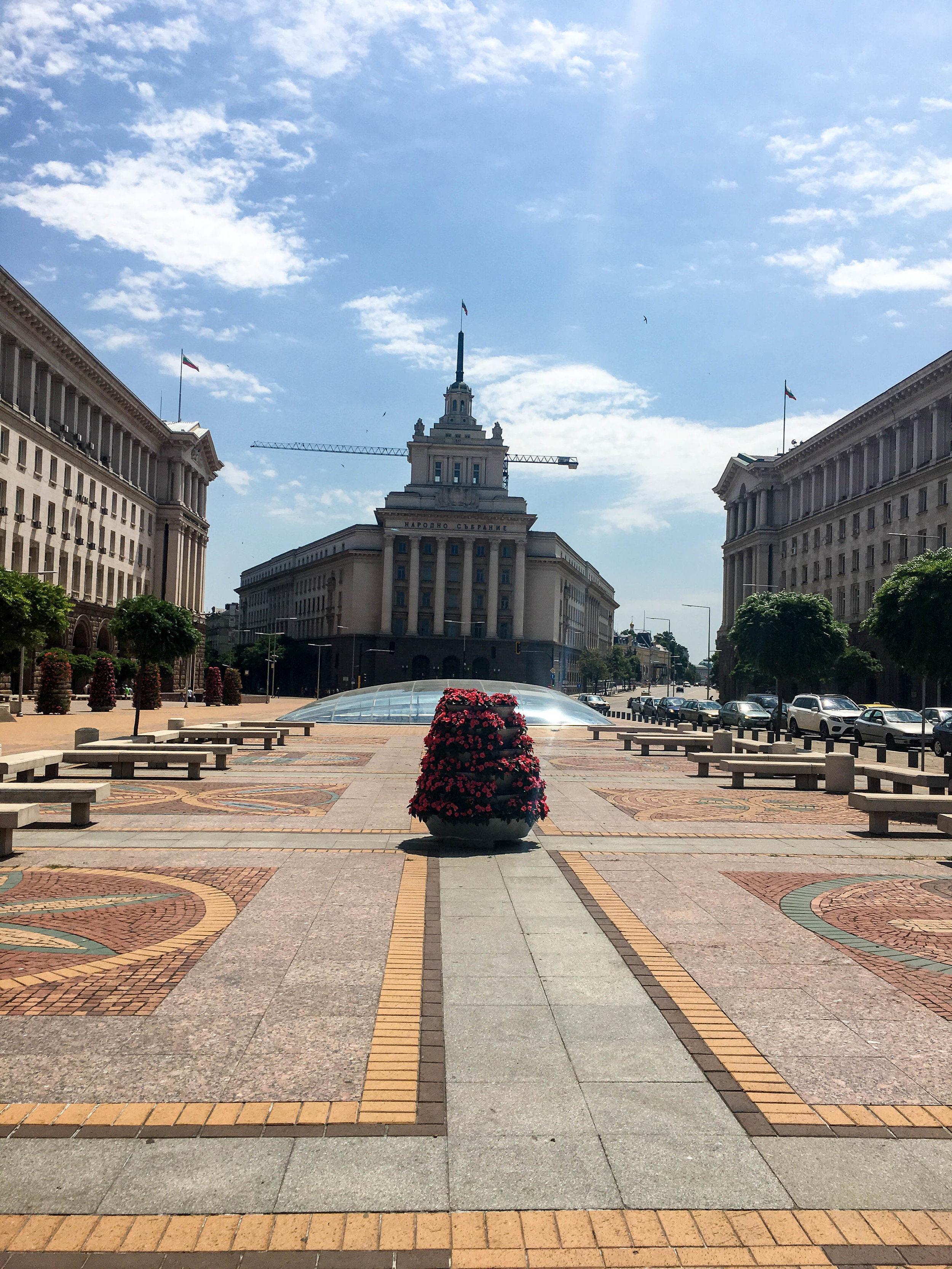
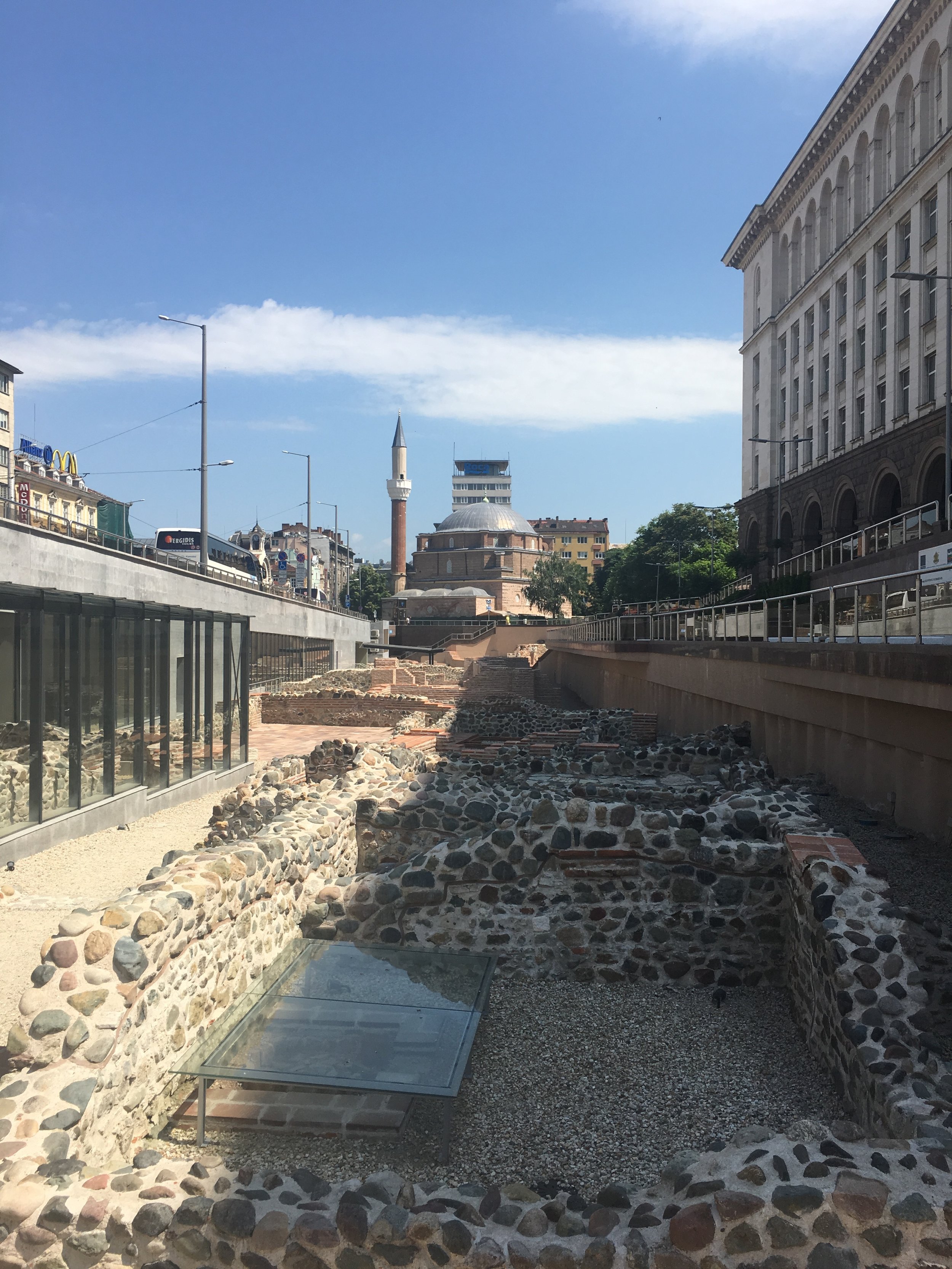













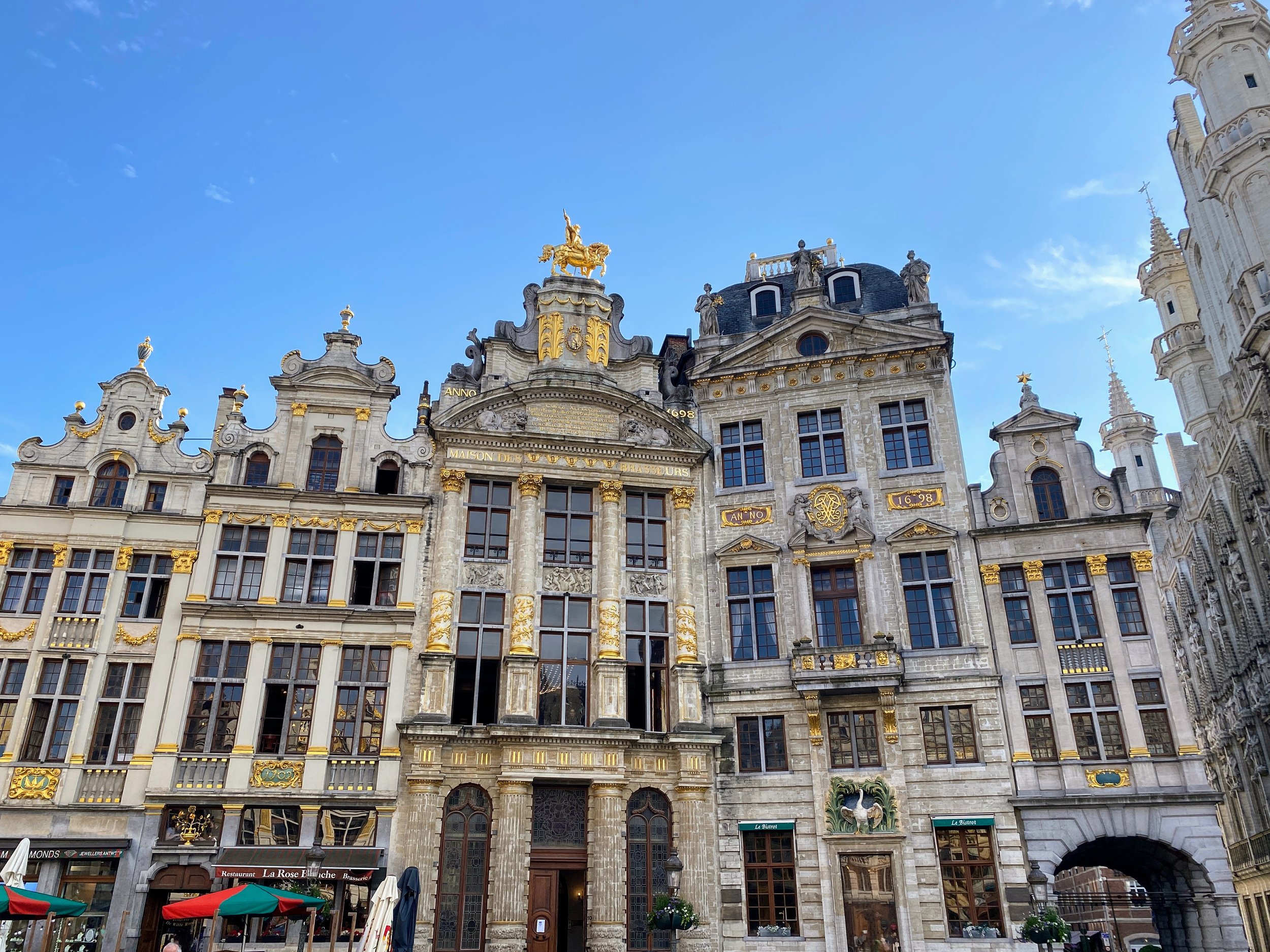






![Best European cities to visit in March [+30 ideas]](https://images.squarespace-cdn.com/content/v1/58ae4fa346c3c4b688b9ac9f/1676418626875-LE8N0ADXJ33Q8CGEUPBS/Things_to_do_in_Lake_Como_Comer_See_Reisetipps+Image+2021-06-09+at+16.55.16+%281%29.jpeg)